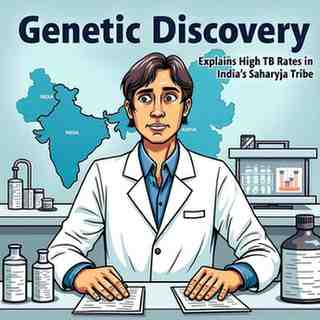
A recent study has found a unique genetic association behind alarmingly low rates of tuberculosis (TB) in the Sahariya tribe in central India. This finding may partly explain why the TBthe TB rate in this community is so much higher than the national mean.
A Tribe at High Risk
The Sahariya, a population of about 600,000, lives in the isolated forest regions of Madhya Pradesh, Rajasthan and Uttar Pradesh. The villagers inhabit stripped mud and stone houses, and live by small scale agriculture and forestry labor, known for the traditional dance of Saharia Swang. The fact that starvation and poor access to medical resources are factors in disease was a given, but the sheer discrepancy in TB rates suggested that something more fundamental was at play.
Extremely High TB Incidence
The former's incidence of TB is 1,518 to 3,294 cases per 100,000 persons, much higher in comparison to India's overall numbers. Yet this discrepancy spurred scientists to test for a genetic propensity.
Key Genetic Findings
Mitochondrial DNA (obtained from mothers) was examined from 729 individuals in a study conducted by Banaras Hindu University. The startling discovery was that the Sahariya tribe possessed two rare matrilineal (mother-to-daughter) genetic lines, or haplogroups, known as N5 and X2 . These haplogroups are absent in the other populations.
The lineage is thought to have been brought from the Soviet Union via Mary (in what is now Turkmenistan) to a “founder population,” probably in western India in the early Iron Age, the study mentioned. The frequency of these specific haplogroups is currently associated with a possible enhanced susceptibility to TB.
Implications for Public Health
This finding is important since it is the first time that the genetic characterization of a population has been directly associated with TB susceptibility. It is a reminder that risk of disease depends on a complex interplay of genetics, environment and worldly circumstances.
The results can lead to more specific and efficient public health strategies. "By knowing about this genetic vulnerability, public health authorities can create better TB control and prevention programs targeted to the Sahariya and other vulnerable tribal populations so that a "one size fits all" disease management approach is a thing of the past.
Month: Current Affairs - August 20, 2025
Category: current affairs daily